National Assembly of the Republic of Serbia / National Assembly / History / After Second World War
After Second World War
The historic roots of the National Assembly of Serbia in the period after the Second World War lie in the decision of the Second Meeting of the Anti-Fascist Council of People's Liberation of Yugoslavia, held on November 29 and 30, 1943 in Jajce, that Yugoslavia should be created on a federal basis as a union of five equal peoples.
The Great Anti-fascist People's Liberation Assembly of Serbia was held from November 9 to November 12, 1944. The 989 Deputies of this Assembly were not elected by the people but were delegated from the People's Liberation Committees or co-opted from the People's Liberation Front. A decision was taken at the sitting to constitute the Anti-fascist Assembly of People's Liberation of Serbia (ASNOS) as the highest body of legislative and executive government in Serbia. Two hundred and seventy eight deputies were elected from among the 989 present to make up the Anti-fascist Assembly of People's Liberation of Serbia.
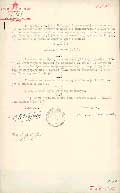
Act on the State Seal of the Republic of
Serbia, August 28, 1945
The Presidency, or Presidium of the National Assembly of Serbia existed until 1953 as a separate body with significant legislative and executive functions.
In April 1945, the Anti-fascist Assembly of People's Liberation of Serbia changed its name to National Assembly of Serbia. Later names of the assembly: National Assembly of the People's Republic of Serbia (February 1946 to April 1963); Assembly of the Socialist Republic of Serbia (April 1963 to September 1990); Assembly of the Republic of Serbia (September 1990 to January 1991) and National Assembly of the Republic of Serbia (since January 1991).
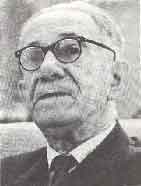
Sinisa Stankovic, PhD first Chairman of the National Assembly of Serbia after the Second World War
The first Chairman of the National Assembly of Serbia after the Second World War was Sinisa Stankovic, PhD.
The first set of Assembly Rules of Procedure was passed at the sitting of ASNOS in April 1945. The same sitting saw the passing of the Act on the Oath of Deputies of the National Assembly of Serbia; four Assembly Committees were also constituted.
The first Act on the Election of Deputies was passed by the National Assembly of the People's Republic of Serbia in July 1946. The Act on the Constituent Assembly of the People's Republic of Serbia was also passed at that sitting.
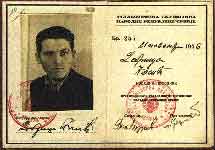
Deputy's Identity Card which belonged to Dobrica Cosic
The first elections for the Assembly in Serbia after the Second World War were held on November 10, 1946. These were elections for the Constituent Assembly of the People's Republic of Serbia.
All Yugoslav citizens living on the territory of the People's Republic of Serbia over 18 years of age had the right to vote. For the first time, women and soldiers had the right to vote. Elections were carried out on the basis of universal, equal and direct suffrage, by secret ballot.
Voting was performed with little balls until elections in November 1953, when ballot papers were introduced for the first time.
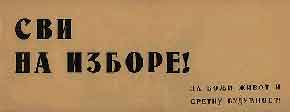
Everybody should vote, election poster
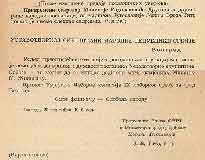
Letter of Josip Broz Tito tothe Constituent Assembly of the People's Republic of Serbia
According to the Act on the Election of Deputies adopted on May 13, 1950, a ballot box without a list was instituted. Elections according to this Act were performed in March 1951.
Until 1963, one deputy was elected for a certain number of inhabitants (twenty, forty or fifty thousand). Therefore, the total number of Deputies differed. Thus, the Constituent Assembly numbered 287 Deputies, the 1951 Assembly had 315, while 291 Deputies were elected to the Council of the Republic and the Council of Producers of the People's Republic of Serbia in 1953.
The first Serbian Constitution after the Second World War was passed by the Constituent Assembly of the People's Republic of Serbia on January 17, 1947. Its seventh article is devoted to the National Assembly.
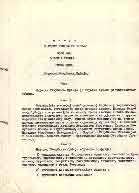
Constitution of the People's Republic of Serbia, January 11, 1947
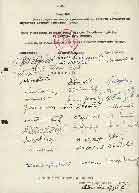
Constitution of the People's Republic of Serbia, January 11, 1947
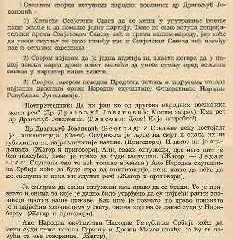
The mandate of Dragoljub Jovanovic PhD is taken away (from stenographic minutes)
The Assembly exercised its rights and duties in accordance with the Federal Constitution, the Serbian Constitution and Federal laws.
The mandate of the National Assembly lasted for four years.
Deputies' immunity from prosecution was guaranteed.
The first instance of a Deputy's mandate being taken away after the Second World War occurred in July 1946. The mandate was taken away from Dragoljub Jovanovic PhD because of his allegedly treacherous speeches in the Assembly. From 1948 to 1951 mandates were taken away from Sreten Zujovic and another thirteen Deputies. They had all been accused of crimes against the people and the state. These were the first "IB-cohorts".
The first woman to preside over a sitting of the Assembly was Milka Minic (at the sitting of the Great Anti-fascist People's Liberation Assembly of Serbia on November 12, 1944).
There were 9 women Deputies in the Constituent Assembly of the People's Republic of Serbia. Seventy-one women were elected to the Assembly in 1963, only three in the multi-party elections in 1990, and 28 in the elections held in December 2000. A woman has never been Chairman. The first woman Deputy Chairman was Zlatija Djukic-Veljovic (1982-1984), and the first woman Chairman of an Assembly Council was Perka Vitorovic (Chamber of Social Security and Health, 1963-1965).
Until 1953, the National Assembly was unicameral. From 1953 to 1963 it had two chambers: the Council of the Republic and the Council of Producers; from 1963 to 1974 it was composed of five chambers: Council of the Republic, Council of Economy, Council of Education and Culture, Council of Social Security and Health, and the Organisational and Political Council. From 1974 to 1990 it had three chambers: the Council of Associated Labour, the Council of Municipalities and the Social and Political Council. The Assembly again became unicameral in January 1991.
According to the 1963 Constitution, the Assembly is defined as the highest government and social self-management body within the rights and duties of the Republic. It numbered 440 Deputies, of which 120 formed the Council of the Republic, while the remaining four Councils each numbered 80 Deputies.
Candidates for Deputies were proposed at voter meetings and at meetings of working people.
The Republic Executive Council was responsible to the Assembly for its work. Its members and President were elected by the Assembly.
As part of constitutional reform, the Assembly of the Socialist Federal Republic of Yugoslavia and the Assemblies of the Socialist Republics passed constitutional amendments from 1967 to 1972. The Serbian Assembly passed sixteen amendments in 1967, 1969 and 1972. All the Republics, including Serbia, became states, and the autonomous provinces became constitutive elements of the Federation, with the right to pass their own constitutions.
After the institution of the Council of the People into the Assembly of the Socialist Federal Republic of Yugoslavia in 1967, the Serbian Assembly elected 20 Deputies to that Council, whereas the Assemblies of the Autonomous Provinces each elected 10.
Assemblies of all Socialist Republics, including the Assembly of the Socialist Republic of Serbia, agreed with the draft Constitution of the Socialist Federal Republic of Yugoslavia before its ratification by the Assembly of the Socialist Federal Republic of Yugoslavia on February 21, 1974. The Constitution of the Socialist Republic of Serbia was passed on February 25, 1974. The hitherto-used system based on Deputies was replaced by a Delegate-based system, as well as a self-management concept based on associated labour. The Council of Associated Labour, as one of the three Councils of the Assembly, had the most Delegates - 160. The other two, the Council of Municipalities and the Social and Political Council each had 90 Delegates.
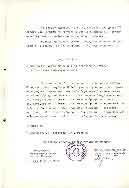
The Decision on the Proclamation of the Constitution of the Socialist Republic of Serbia, February 25, 1974
According to the Constitution of the Republic of Serbia passed in 1974, the Assembly elected the members of the Presidency of the Socialist Republic of Serbia, the Council of the Republic and the Serbian member of the Presidency of the Socialist Federal Republic of Yugoslavia. The Presidency of the Socialist Republic of Serbia passed decrees proclaiming Acts adopted by the Assembly.
The Assembly elected Petar Stambolic as the first Serbian member of the Presidency of the Socialist Federal Republic of Yugoslavia.
The Council of the People of the Assembly of the Socialist Federal Republic of Yugoslavia changed its name to Council of the Republics and Provinces. The Serbian Assembly elected 12 Delegates to that Council, while Assemblies of the Socialist Autonomous Provinces elected 8 each.
Self-management settlements and social agreements were on the agenda of numerous Assembly sittings.
Constitutional reform in Serbia began in January 1988 and ended on March 28, 1989 with the proclamation of Constitutional Amendments IX to XLIX. This day was marked as the day when a new Constitution was adopted and when Serbia's sovereignty was returned to her. It was made a national holiday.
The new Constitution, the Constitution of the Republic of Serbia was ratified on September 28, 1990. The Assembly's authority had not changed significantly. The Delegate-based system was abolished, and a Deputy-based one reintroduced. The Assembly is made up of 250 Deputies.
According to the 1990 Constitution, the Chairman of the Assembly calls elections for the Assembly and the President of the Republic and signs decrees proclaiming Acts ratified by the Assembly.
The first multi-party elections for the National Assembly of Serbia after the Second World War were held on December 9 and 23, 1990, on the basis of a decision made by the National Assembly of Serbia on the calling of elections and previously passed Acts on the Election of Deputies and on Constituencies. Voter turnout was 5,030,440 people out of 7,036,303 eligible, or 71,49%. The Socialist Party of Serbia won 194 seats, the Serbian Renewal Movement 19, the Democratic Union of Vojvodina Magyars 8, candidates of various Citizens' Groups 8, the Democratic Party 7 etc. Professor Slobodan Unkovic PhD was elected Chairman of the first multi-party Assembly of the Republic of Serbia, to be replaced as early as June 6 by Aleksandar Bakocevic, while Professor Dragutin Zelenovic PhD was elected Prime Minister.
Alongside the elections for Deputies, the National Assembly of the Republic of Serbia also called elections for the President of the Republic. These were held on December 9, 1990, with Slobodan Milosevic being elected President of the Republic.
Apart from a large number of laws, the Assembly passed, in 1991, several declarations on violence and crimes against the Serb people in Croatia, on Croatia's secession and European Union's support for the secession.
Extraordinary elections for the National Assembly and the President of the Republic were held on December 20 and 27, 1992 and January 3, 1993. The Socialist Party of Serbia won 101 seats, the Serbian Radical Party 71, DEPOS - Democratic Movement of Serbia 50, etc. Zoran Lilic, MA was elected Chairman of the Assembly, while Nikola Sainovic, MA became the Prime Minister.
Slobodan Milosevic was again elected President of the Republic.
The Serbian Assembly elected 20 Deputies to the Chamber of the Republics of the Federal Assembly.
In the elections held on December 19 and 26, 1993 and January 5, 1994, the Socialist Party of Serbia won 123 seats, DEPOS won 45, the Serbian Radical Party won 39, the Democratic Party won 29 etc. Dragan Tomic was elected Chairman of the Assembly, while Mirko Marjanovic became Prime Minister.
At an extraordinary sitting of the National Assembly of the Republic of Serbia, held on February 11, 1997, for the first time in Serbian parliamentary life, a special law (Lex specialis) was passed. This was the Act on Confirming the Unofficial Results of Elections for Councillors of Municipal and City Assemblies Listed in the Report of the OSCE Mission. The elections in question had taken place on November 17, 1996.
Elections for Deputies to the National Assembly of the Republic of Serbia, held on September 21 and 28, 1997, and on October 5, 1997, had the following outcome: the Coalition of the Socialist Party of Serbia, Yugoslav Left and New Democracy won 110 seats, the Serbian Radical Party won 82 seats, the Serbian Renewal Movement won 45 seats, etc. The Chairman of the Assembly and the Prime Minister remained the same.
The course of the elections for the President of the Republic, held simultaneously with those for the Assembly, was as follows: in the first round, none of the candidates obtained the necessary majority. In the second round, voter turnout was less than half of the total number of voters eligible, so that neither Vojislav Seselj PhD nor Zoran Lilic MA, the two candidates with the greatest number of votes obtained in the first round, could be elected. When the electoral procedure was repeated, Milan Milutinovic won a greater number of votes in the second round than Vojislav Seselj PhD, thus becoming President of Serbia.
Throughout 1998 the Assembly took several turns to discuss the then current security situation as well as the economic and social conditions in Kosovo and Metohija, as well as Albanian separatism. A referendum was called in order for citizens of Serbia to vote on whether they would allow foreign representatives to participate in the solution of problems in Kosovo and Metohija. Close to 95% of the 5,297,776 people who turned out to vote responded with a "no".
In early February 1999, the National Assembly strongly condemned threats made by NATO to Yugoslavia. It did the same on March 23, after the Serbian delegation's talks in Rambouillet and Paris. A day later, on March 24, 1999, NATO forces attacked Yugoslavia.
During the State of War, the Serbian Assembly held one sitting, on June 3, 1999. This session saw the passing of a decision to adopt the Document proposed to reach a peaceful solution of the crisis, which had been brought by the European Union and Russia's highest representatives, the President of the Republic of Finland Martti Ahtisaari and the Special Envoy of the President of the Russian Federation Boris Yeltsin, Viktor Chernomyrdin.
After the events of October 5, 2000, with the official confirmation of the victory of Vojislav Kostunica, PhD over Slobodan Milosevic in the elections for the President of the Federal Republic of Yugoslavia, the Serbian Assembly passed, on October 9, 2000, the Act on the Election of Deputies. According to it, all of Serbia is one constituency. An electoral list must be confirmed by at least 10,000 voters.
The Assembly passed a decision on October 9, 2000, to form a Board of Inquiry of the National Assembly in order to ascertain facts connected to the deaths of four high-ranking officials of the Serbian Renewal Movement on October 3, 1999.
On October 25, 2000, the President of the Republic of Serbia Milan Milutinovic dissolved the National Assembly of the Republic of Serbia, which had been constituted on December 3, 1997. An interim government was formed, headed by Milomir Minic.
Elections for Deputies to the National Assembly of the Republic of Serbia were called for December 23, 2000. The electoral procedure was worked out in detail. The Republic Electoral Commission passed its Rules of Procedure.
In the elections held on December 23, 2000, out of 6,525,162 people eligible to vote 3,748,623, or 55,91%, turned out. The Democratic Opposition of Serbia (DOS) won 176 seats, the Socialist Party of Serbia won 37, the Serbian Radical Party won 23 and the Party of Serbian Unity won 14 seats. Other lists of candidates did not win any seats. Dragan Marsicanin was elected Chairman of the Assembly, while Zoran Djindic PhD became Prime Minister.
In the first years after the Second World War, the National Assembly of Serbia met in the building of the Federal Assembly. The Parliament Building, located at 14, Srpskih vladara street, was completed in 1953. It remains the seat of the Assembly to this day.
Boro Majdanac, MA
Consultant Archivist
of the Archives of Serbia
B e l g r a d e
| M | T | W | T | F | S | S |
|---|---|---|---|---|---|---|
| 29 | 30 | 31 | 1 | 2 | 3 | 4 |
| 5 | 6 | 7 | 8 | 9 | 10 | 11 |
| 12 | 13 | 14 | 15 | 16 | 17 | 18 |
| 19 | 20 | 21 | 22 | 23 | 24 | 25 |
| 26 | 27 | 28 | 29 | 30 | 31 | 1 |
No announcements for selected date

